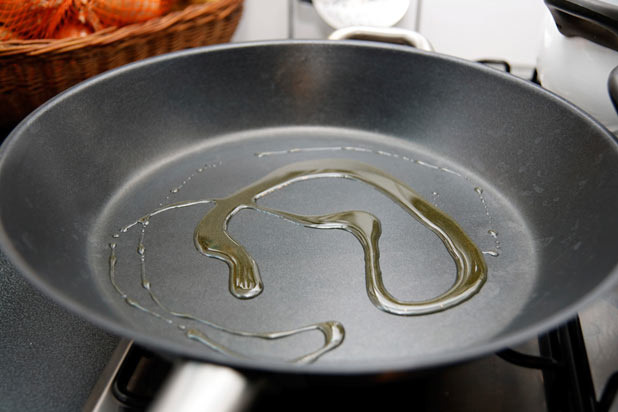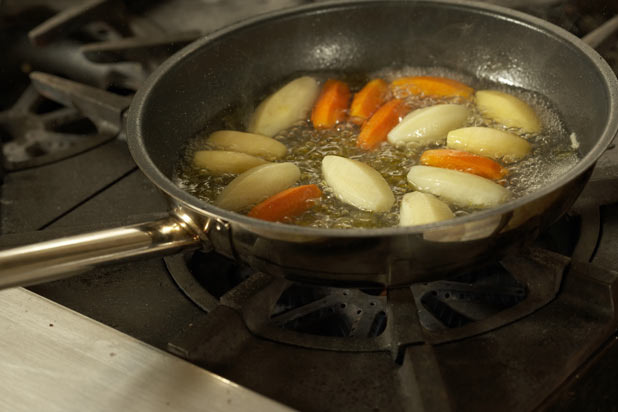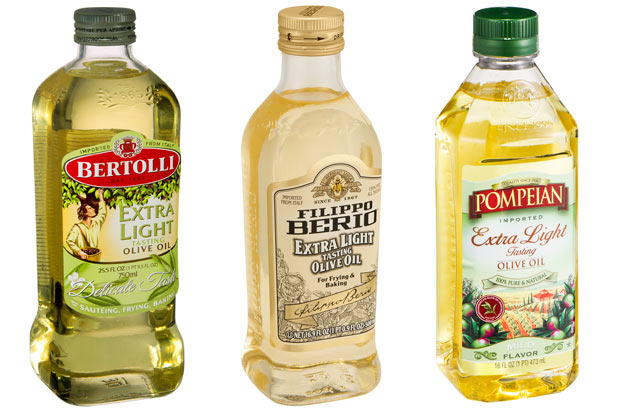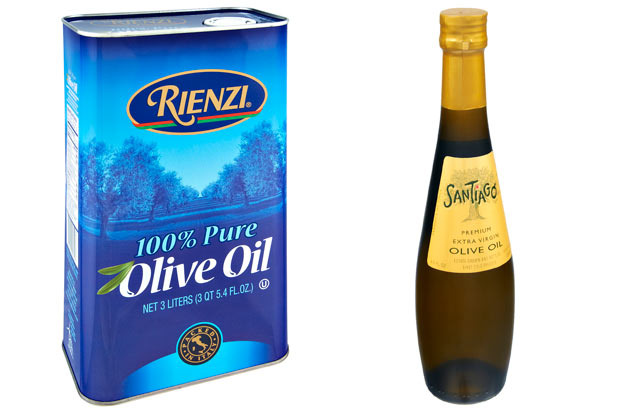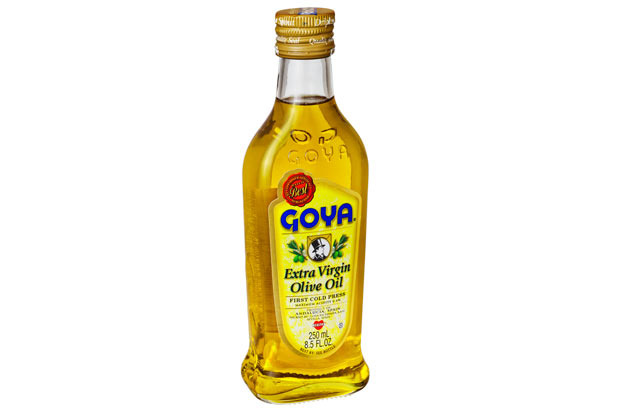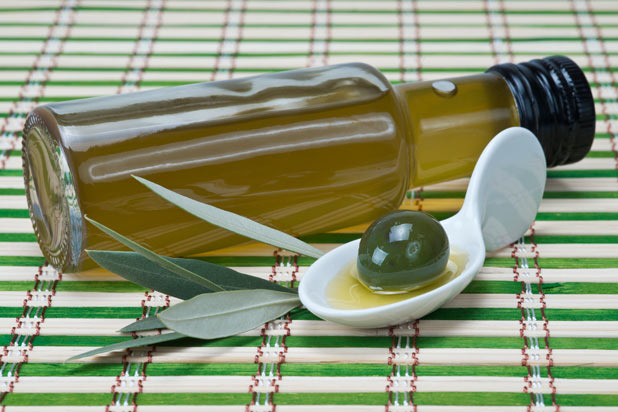7 Myths About Olive Oil Slideshow
With all the recent controversy over fraud in the olive oil market (and food fraud in general), it's natural to wonder if the extra money you're paying for olive oil is worth it, especially when it's difficult to be sure that what is in the bottle is the real thing. In an episode of Dr. Oz which aired Feb. 11, 2013, viewers were told that if an extra-virgin olive oil solidified in the refrigerator, then it was probably the real thing — not necessarily true, according to Eryn Balch, executive vice president of the North American Olive Oil Association.
Many oils, not just extra-virgin olive oil, turn solid when chilled, and whether or not a particular extra-virgin olive oil solidifies depends on its fatty acid profile — the mix of saturated and types of unsaturated fats unique to the type of olive or olives used to make the olive oil, their harvest date, and other factors.
Myth #2: When cooking with olive oil, always use extra-virgin olive oil.
How many recipes have you seen specify "extra-virgin olive oil" in the ingredient list? The abbreviation has even become an endearing (or eye-roll-inducing) mantra for home cooks, thanks to Rachael Ray —we're not going to say it because we're not allowed to say it (the word is on a wall of banned words called "The Island" in our office), and you already know how it goes anyway. (Take a shot, now.)
If it's a salad dressing recipe or even a baking recipe, that's fine — but if it asks you to sauté, grill, roast, or (gasp) fry, it's really bad advice — the smoke point of extra-virgin olive oil is about 375 to 405 degrees, and if you go past it, as you surely will when using one of these high-temperature cooking techniques, you'll produce all sorts of nasty chemicals that will end up in your food. Some common examples include peroxides, aldehydes, ketones, and hydroperoxides, all of which are toxic. But you don't just end up producing bad substances; you end up destroying the good ones, too. At 356 degrees, antioxidants start to say goodbye — tocopherols are the first to go.
Instead, when cooking at high temperatures, use a refined olive oil, which has a much higher smoke point. At stores, it is often marketed as "extra-light," "light tasting," or even just "olive oil." Save that beautiful extra-virgin olive oil for finishing a dish, not for cooking it.
Myth #3: You can't fry food with olive oil.
This, too, is a myth. Olive oil is a popular choice in Spain, Italy, Greece, and many other south European countries for frying. But the key is to pick the right type of olive oil. As mentioned in the previous slide, it's not such a good idea to fry with extra-virgin olive oil. But refined olive oil has a much higher smoke point than extra-virgin. At roughly 468 degrees, its smoke point is higher than or nearly as high as some other oils popular for frying, including peanut oil (450 degrees) and canola oil (470 degrees). Pure olive oil, a mixture of refined olive oil and extra-virgin olive oil, is also a good choice for light frying.
Myth #4: "Light" or "extra-light" olive oil is lower in calories than other olive oils.
A misleading marketing term. "Light" or "extra-light" is more accurately in reference to the taste of the oil, which after going through various processes including deodorization, is flavorless and odorless, rather than the caloric or fat content of the oil. "Light" and "extra-light" oils, like just about any other cooking oil, contain 120 calories and 14 grams of fat per tablespoon.
Myth #5: Pure olive oil is better than extra-virgin olive oil.
It may sound better, but the reverse is actually true.
Pure olive oil is mostly refined olive oil with a little extra-virgin olive oil added back in for smell and taste. A refined olive oil is made from olive oil that does not meet international standards for consumption and would otherwise be put to other (non-food-related) uses. It undergoes various processes to help remove any off-putting odors or flavors and, as a result, loses free fatty acids and what is called the "unsaponifiable fraction" — the portion of olive oil that contains antioxidants. (The term comes from the fact that it cannot be turned into soap.)
Extra-virgin olive oil, on the other hand, is the highest grade of olive oil and what can be thought of as the "purest" form, with various antioxidants and phenols that confer numerous health benefits.
It sounds like there isn't much of a reason to ever buy pure olive oil, but that's not quite true. Removing the "unsaponifiable fraction" raises the smoke point and allows you to use high-temperature cooking methods, like frying, safely (as mentioned before). And, the fatty acid profile of the olive oil remains intact — high in monounsaturated fats (typically about 70 percent of the total fat content) which help raise levels of HDL (the "good" cholesterol) and low in saturated fats. Refined olive oil also goes by the name "light," "extra-light," and just "olive oil."
Myth #6: An award-winning oil is a sure bet.
If the bottle has a bunch of neat stickers plastered to it from competitions around the world, surely it must be a good olive oil. Right? Wrong. An oil from an award-winning producer is not necessarily an award-winning oil. In other words, the oil that's in the bottle is not necessarily the oil that won the award. The only major competition awarding medals where you can be sure you are getting what is advertised is an oil that places in the top three at Mario Solinas, a prestigious competition held in Spain and organized by the International Olive Council, an organization which creates voluntary standards for olive oil grading. To market an oil as a Mario Solinas oil, producers are only allowed to bottle their submissions to the competition — which come in a sealed tank.
To be sure, these oils are very expensive and probably are not easily found, so the main lesson here is: Don't let the stickers fool you because they might not mean much.
Myth #7: A green olive oil is bad olive oil.
Unless it's infused with something, many consumers probably aren't accustomed to seeing oil come in different colors. So when encountering a green-tinted olive oil for the first time, it's only natural to think something is wrong. But olive oil isn't just an oil — it's a juice, and if you think of it as a juice, a green coloration isn't so unusual.
According to Simon Field, instructor for Savantes, an olive oil certification program for producers, the color of an extra-virgin olive oil will vary according to the harvest date and type of olive used to make the oil. Green oils high in antioxidants like chlorophyll (the source of the green color) are often more robust in flavor, with pronounced pepperiness and bitterness (though not always the case). In addition, as an olive oil ages and certain compounds oxidize, the color will change over time.

